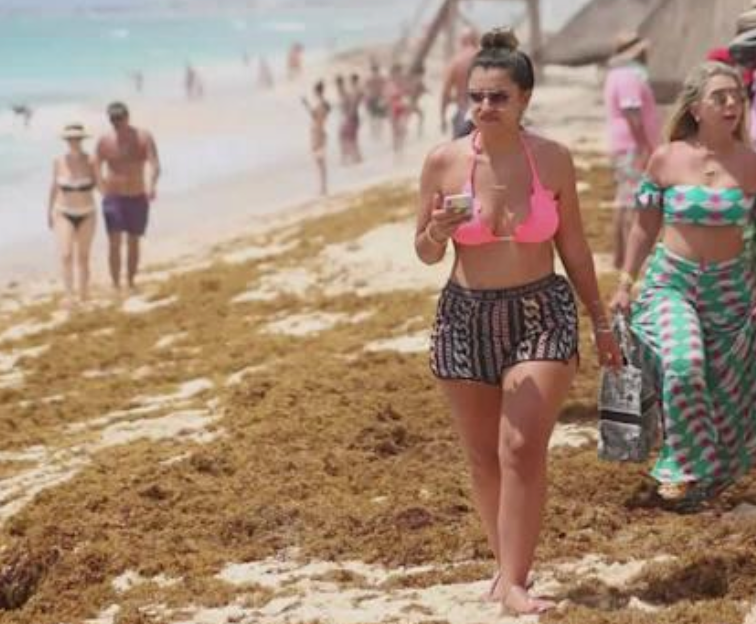The problem of foul-smelling seaweed-like algae on the country’s Caribbean coast beaches is “alarming.”
The arrival of mountains of brown sargassum on the coast’s beautiful white sand beaches comes just as tourism is recovering to pre-pandemic levels, though job recovery in the country’s top tourist destination has been slower.
With more algae spotted floating out at sea, experts fear that 2022 could be as bad or worse than the catastrophic year of 2018, the biggest sargassum wave to date.
“We can say the current situation is alarming,” said Navy Secretary José Ojeda, who has been entrusted with the apparently hopeless task of trying to gather sargassum at sea, before it hits the beaches.
The Navy currently has 11 sargassum-collecting boats operating in the area. But the Navy’s own figures show that the portion they have been able to collect before it hits the beach has been falling.
In 2020, the Navy collected 4% of sargassum at sea, while 96% was raked off beaches. But that figure fell to 3% in 2021 and about 1% so far in 2022.
So much algae is reaching the beaches that hotels and local authorities are using bulldozers and backhoes, because the normal teams of rakes, shovels and wheelbarrows are no longer enough.
“The heavy machinery, when it picks it (sargassum) up, takes a large amount of sand with it,” contributing to beach erosion, Rodriguez Martinez said. “There is so much sargassum that you can’t use small-scale equipment anymore, you have to use the heavy stuff, and when the excavators come in, they remove more sand.”
Rodríguez Martinez worries that 2022 could be worse than the previous peak year. “In the last few days there have been amounts washing up, and in places, that I didn’t see even in 2018,” she said.
The problem comes just as resorts like Cancun, Playa del Carmen and Tulm are recovering from the brutal two-year drop in tourism caused by the coronavirus pandemic. Not all beaches have been hit equally; many in Cancun and Isla Mujeres are often free of much sargassum, but much of the Riveria Maya has been hit hard.
“The Navy is making an effort, but it needs more, it isn’t enough,” said León. “The ideal thing would be to gather it before it gets to our beaches.”
But she notes another problem: what to do with the thousands of tons of stinking algae collected each year, mainly by private hotel owners. Some have simply been tossing the mounds collected from the beach into disused limestone quarries, where the salt and minerals collected in the ocean can leech into groundwater.
Other simply toss into woodlands or mangrove swamps, which is equally as bad.
“The algae has a lot of salt … so that is not good, even for palm trees, which are pretty salt resistant,” she noted.
While some have tried to use sargassum to create bricks or fertilizer, the lack of official policies and long term plans make it hard to obtain big investments for such plans.
Source: Yahoo








0 Comments